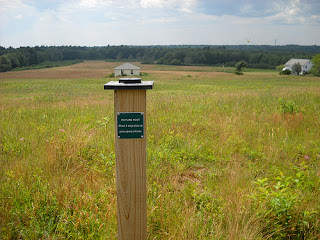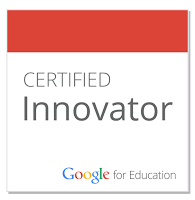This is the third post in a series of posts about a summer science camp for teachers that I attended.This summer when I spent the week with the TOTE, Teachers of the Estuary I learned so much that I have spent my summer blogging and sharing the information. I think I saved the best for last, Picture Posts! Throughout the Wells Reserve there were 3 posts that are part of the Picture Post Project. This project is something very simple; it complements Phenology, observing nature’s calendar, utilizes simple technology, it is something any class can participate in from preschool to Senior College students. The posts are set up as a stand alone or an existing post surrounding a structure, body of water, forest, garden or school. This project is open to anyone and has the capability of looking at, photographing, and documenting change over time. The change can be a daily, weekly, monthly, seasonal or a yearly change.
Picture Post is a part of the Digital Earth Watch (DEW) network. DEW supports environmental monitoring by citizens, students and community organizations through digital photography and satellite imagery.
You can...
- contribute photographs to any Picture Post
- add your own Picture Post
- measure environmental change in your neighborhood, and
- contribute to science networks.
Educators can learn a lot about Digital Earth Watch projects. http://picturepost.unh.edu/DEW_education.jsp There are so many worthwhile projects I am sure you would find something to interest all the students in your classes. There are explicit instructions detailing how you can get started and build a picture post. http://picturepost.unh.edu/build.jsp
The Picture Post Project has made this accessible to all with step by step directions, and movies at their site. The recycled plastic post topper with gradients cut out around the 360 degrees setting is a fool proof addition to the project. I was able to snap my 8 photos, then an additional shot of the sky, upload and view my photos all in a matter of 20 minutes from field to classroom. I enjoyed comparing my photos of a summer day with February photos of someone else. You will have to check out the site and compare photos from a specific site as there isn’t a way for you to see my comparison.
There is so much one could do in the classroom by participating in this project; math, geography, poetry, environmental science, but most of all, your students will become the life long learners we all hope for. Check out Picture Post, and let me know if you have heard of it before. If not, please help to spread the word. My students will be building a picture post at Wells Harbor and possibly in our woods on school grounds. We want to have as many students and community members involved as possible. Now, when leaves change colors we will all be able to see that it has happened!
For more information you can contact at this © Copyright 2011, The University of New Hampshire, Durham, NH 03824 | About | ADA Disclaimer | Terms of Service | Contact | Picture Post is supported by NASA










